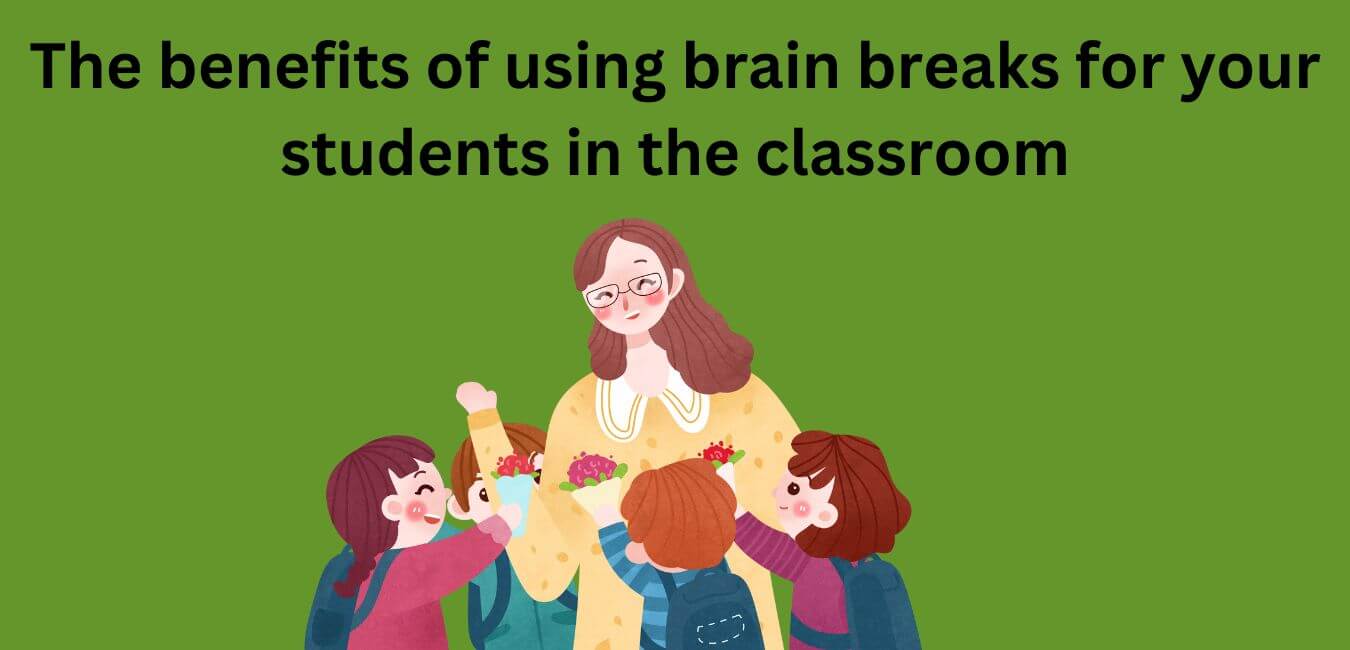Wouldn’t life be easy if every student appeared in school eager to learn? Many teachers bemoan that students just aren’t as motivated as they used to be. Whether that phenomenon is true or not, the reality is that the students in your classroom are the ones you have to teach.
In every classroom, there have always been some students who seem unmotivated to learn—at least to learn the things you have to teach. The challenge is to improve the odds of engaging them in your classroom lessons.
In this blog post, we are going to look at some of the strategies you can use to motivate and engage those students who are unmotivated to learn what you teach them.
Tips to Motivate Students Who are Unmotivated
There is no magic potion to sprinkle or secret phrase you can whisper to suddenly convert reluctant learners into passionate seekers of knowledge. However, we can learn from those truly outstanding teachers who have achieved some degree of success in capturing their students’ interest and getting them to participate in class.
Here are strategies that research shows that successful teachers use to help motivate their unmotivated students:
1. Give Individualized Instructions
Everyone is different and is therefore motivated differently. Give personalized instructions to students and avoid issuing whole-level instructions to the entire class. This will help you to get this type of student to do whatever they are expected to.
2. Allow Students some Freedom
When feasible, offer options in assignments, projects, or assessments. Give them some control.
People, like your students, like to have some freedom or control in whatever they are doing or are asked to do.
Due to that, giving students some control over what you ask them to do will motivate them to see the activities through.
So, it is not a bad idea to give your students some freedom in your classroom. Check out this article for more information on the importance of freedom in the classroom and how to implement it.
3. Give Clear and Concise Explanations
Use good examples. Those that connect with their daily experiences are most helpful.
One of the best ways to motivate students to engage during lessons is promoting their understanding of the lesson.
To make students understand whatever you are teaching them, you must explain things clearly and straight to the point.
Another way is to relate concepts to their day-to-day life experiences and knowledge. With that, they easily follow along and have the zeal to learn.
4. Link Your Content to Your Students’ Personal Lives and Interests
There is no sin in making learning fun when possible.
Everyone gets interested in what is related to them and their experiences. So, use that to your advantage when trying to motivate your students.
In planning your lessons and contents, look for examples that you experience in their lives. This will help improve their understanding and also motivate them to engage more.
5. Take Advantage of Students’ Talents and Capabilities
Find a way to tap their unique talents in special projects or assignments. Build on their strengths.
This is important for every teacher because you must know your students well.
Knowing them helps you understand their unique talents and capabilities.
Based on that, you should structure your lessons to make use of their respective talents and skills.
Because of that, they will be highly motivated to take part or engage in your lessons.
6. Link Learning Materials and Activities to Real-World Problems
Use hands-on learning activities with real-world problems as much as possible.
Make use of real-world activities and teaching materials based on what everyone experiences within the society.
Challenge your students to try to solve real-life problems and you will be surprised to see them working actively with high motivation.
7. Challenge Your Students to Stretch Themselves
Seldom do you get more than you expect from your students.
Sometimes you must try as much as possible to convince unmotivated students to stretch themselves a bit in order to get motivated to perform an activity.
Often times students are just looking for someone to tell them to continue moving or trying so that they can get motivated.
So, stand your feet and let them know that they have to stretch themselves a bit in order to be able to perform activities as expected.
8. Teach with Passion and Enthusiasm
Show genuine enthusiasm for what you are teaching. It is difficult to generate interest if you are just going through the motions. Great teachers exude passion for what they are teaching.
Students derive their motivation to succeed and engage properly in lessons from the teacher.
So, as a teacher, you must also exhibit energy, zeal, and enthusiasm in whatever you are teaching your students.
Else, they will get bored and will lose the motivation to listen actively during your lessons.
9. Treat Students with Respect and Dignity
Just be real. Don’t hide behind a role. You can’t be your students’ best friend but do treat them with respect and sincerity.
You must treat each of your students with respect. Respect is an important part of every human society.
You must be professional and treat each student with respect, even if the student is not your favorite or you know you are not his/her favorite teacher.
Also, always try to be honest and sincere to them.
With all that, you will promote a healthy relationship between you and the student and that can motivate the student to partake in your lessons attentively.
10. Let Them Know You Care about Them
Show students, you care about them as individuals. Express interest in their lives and challenges.
Everyone loves to care. Your students will be extremely happy to know that you care about them and their lives.
Don’t pretend, let them know that you really care about them.
Try to know them well. Understand their interests and challenges. Also, always advocate for their needs and interests.
This will get them motivated to do every activity you want them to do.
But if you don’t care about them or their needs, they won’t also care about you and whatever you are teaching them.
11. Teach with Patience and Understanding
Offer patience and understanding. Put yourself in the shoes of your slowest students. Some students will always take longer to learn any subject.
Be mindful of students who are slow in learning and performing tasks in class.
They easily lose their motivation if you don’t take care.
So, remain patient with them and know that everyone does activities and learns according to their pace.
Don’t make statements to suggest that they are lazy, or the learning activities are easier to perform.
Statements of this nature can demotivate students.
So, patience and understanding must be central to your behavior in the classroom.
12. Make Use of Humor When Necessary
Some A sense of humor is an asset. Lighten up a little but don’t try to be a comedian.
Many times, humor can help you drive students’ motivation higher. So, learn to use it when necessary.
Remember not to overuse it. Don’t turn yourself into a comedian. This is because it is not why you are employed.
If you overuse it, you will likely not be taken seriously whenever you need students to.
But you can still use it to stir up the classroom when everyone is looking dull.
13. Encourage Students to Talk More
Break up the talk. Few adults can tolerate sitting and listening to someone else talks for hours.
Don’t expect students to enjoy it any more than you would. Get students actively engaged in the learning experience by not talking for more than eight minutes without some student participation.
Try to encourage more student talk time. Learn more strategies to get your students to participate actively without restrictions.
That will help improve the motivation of students to be actively engaged in lessons.
Sometimes students try to participate, but some teachers don’t give them the opportunity.
Don’t become one of those teachers. Invite your students to participate actively by not putting unnecessary restrictions on them.
14. Use Visual Learning Aids
Using visual learning aids such as props, costumes, demonstrations, images, manipulatives, charts, or graphs is extremely helpful in engaging students.
Using visual learning tools promotes students’ engagement in your lessons.
That is, it helps boost the motivation of students to participate well in the classroom.
Be sure to include those tools in the structure of your lessons.
15. Be Compassionate
Offer compassionate support and encouragement. Reward progress and effort. Don’t wait for perfection before giving positive feedback.
Make use of encouragement always to drive the motivation of your students higher. Check our guide on how to use encouragement in your classroom here.
Also, use praise and rewards appropriately to get the best out of your students and to motivate them to participate in lessons. Find more help from our guides on how to use praise and rewards in your classroom here.
16. Use Variety of Teaching Methods
Vary the routine. The element of surprise generates interest. Use a variety of instructional techniques—small-group activities, video, role-playing, simulation games, debates, and guest speakers.
Variety is one of the most important techniques in promoting motivation in our lives.
Even if students enjoy a particular instructional technique, they will get used to it and it will become demotivating to them.
Use varying techniques to deliver your lessons and you will see your students almost always motivated for lessons.
17. Don’t Be Too Strict
Give students a chance to move around occasionally. Revive the energy level when it starts to sag.
Sometimes you should consider allowing students to walk around when they are getting bored or even feeling saggy.
When they move around, they get fresh energy to help them follow through with the lesson.
Don’t be too strict with them. You must be understanding.
18. Never Give Up, You Are Not Alone
Don’t give up on your students. Showing that you believe they can ultimately succeed will often pay off in the long run.
Each day you are planting seeds. It is a percentage game. The more seeds you plant, the greater the chance of some taking hold and growing.
Final Thoughts
Motivation to learn is a necessary part of students’ successes formula. Some students are motivated right from their homes and within themselves, while others need someone to help them find their motivation. That is your job as a teacher. The points mentioned in this article can help you motivate your students appropriately. Remember, you may not be able to motivate everyone, but never give up. Find out more of our articles here.
















